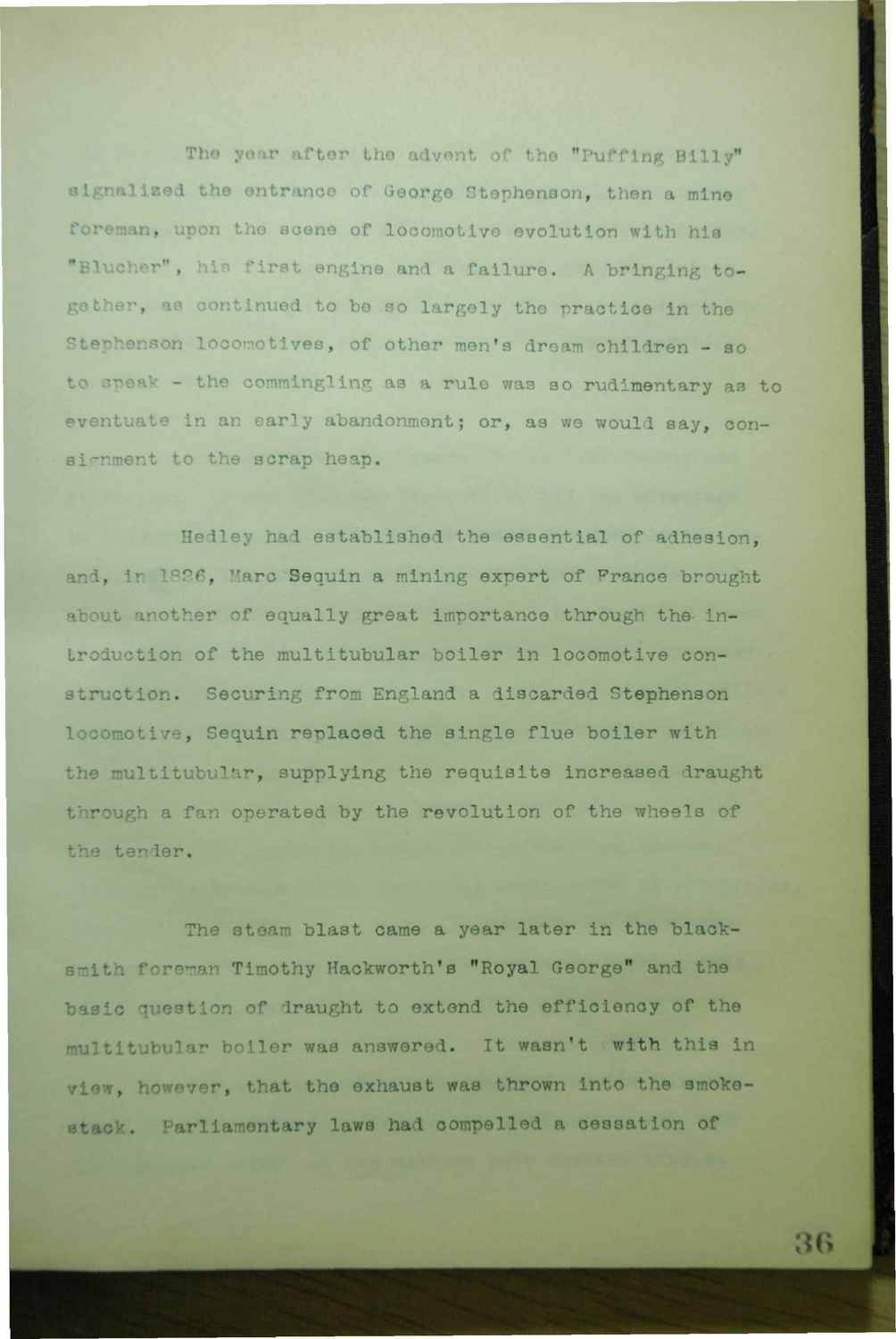Caption: Dedication - Transportation Building Dedication Addresses
This is a reduced-resolution page image for fast online browsing.

EXTRACTED TEXT FROM PAGE:
The year after the advent of the "Puffing Billy" signalized the entranoo of George Stephenson, then a mine foreman, upon tho aoene of loooraotivo evolution with his "Bluoher", his first engine and a failure. A bringing together, as continued to be so largely the practice In the Stephenson locomotives, of other men's dream children - so to speak - the commingling as a rule was so rudimentary as to eventuate in an early abandonment; or, as we would say, consignment to the scrap heap. Hedley had established the essential of adhesion, and, in 1826, Marc Sequin a mining expert of France brought about another of equally great importance through the- introduction of the multitubular boiler in locomotive construction. Seouring from England a discarded Stephenson locomotive, Sequin replaced the single flue boiler with the multitubular, supplying the requisite increased draught through a fan operated by the revolution of the wheels of the tender. The steam blast came a year later in the blacksmith foreman Timothy Haokworth'e "Royal George" and the basic question of draught to extend the efficiency of the multitubular boiler was answered. It wasn't with this in view, however, that the exhaust was thrown into the smokestack. Parliamentary laws had oompelled a cessation of 36
|